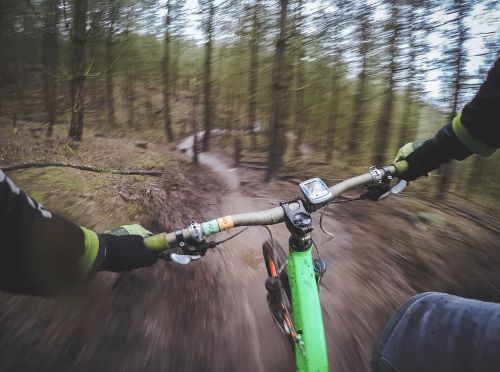

Mountain biking is an exciting and rewarding outdoor activity that allows you to explore the great outdoors while getting in a workout. If you’re new to the sport, you might feel a little overwhelmed by all the gear, techniques, and trails out there. Don’t worry! This guide will provide you with everything you need to know to get started with mountain biking, from choosing the right bike to your first ride on the trails. Let’s dive in!
1. Choosing the Right Bike
Your bike is the most important piece of equipment for mountain biking. As a beginner, it’s crucial to find a bike that suits your needs and requirements and is comfortable to ride. Here’s what to consider when choosing your first mountain bike:
• Type of Mountain Bike: There are several types of mountain bikes, including cross-country (XC), trail, enduro, and downhill bikes. For beginners, a trail bike is usually the best choice because it offers a balance between climbing ability and downhill control. These bikes are versatile and can comfortably handle a variety of terrains. You can also find electric mountain bikes to get started with this fun hobby.
• Hardtail vs. Full Suspension: A hardtail bike has suspension only in the front fork. In comparison, a full-suspension bike has both front and rear suspension. Hardtails are lighter, generally less expensive, and require less maintenance, making them a good choice for beginners. Full-suspension bikes are more comfortable and offer more control on rough terrain but are typically more costly.
• Fit and Size: Ensuring that the bike fits you properly is a must-have for comfort and control. Most bike shops can help you find the right size based on your height and riding style. A good fit will make your ride more enjoyable and help prevent injuries.
2. Essential Gear and Equipment
Aside from the bike, there are a few other pieces of equipment that are crucial for a safe and enjoyable ride:
• Helmet: Always wear a helmet! It’s the most important safety gear for mountain biking. Look for helmets specifically designed for mountain biking, which offer more coverage and protection.
• Gloves: Mountain biking gloves provide better grip and protect your hands in case of a fall. They also help reduce vibration from the handlebars.
• Appropriate Clothing: Wear moisture-wicking, breathable clothing that allows for a full range of motion. Padded cycling shorts can add comfort, especially for longer rides.
• Shoes: Sturdy shoes with a good grip are essential. Many beginners start with flat pedals and standard athletic shoes, which work well for learning basic skills. Once you’re more comfortable, you can consider clipless pedals and cycling shoes that attach to them for better power transfer.
• Water Bottle or Hydration Pack: Staying hydrated is key, especially when riding in hot weather or on long trails. A hydration pack (a backpack with a water reservoir) is convenient and allows you to carry extra gear.
• Basic Repair Kit: A small kit with a spare tube, tire levers, a mini-pump, and a multi-tool can save the day if you have a minor mechanical issue on the trail.
3. Learning Basic Techniques
Before hitting the trails, it’s important to learn some basic mountain biking techniques to ensure a safe and enjoyable ride:
• Body Position: Learn to adjust your body position depending on the terrain. When climbing, lean forward to keep the front wheel planted. When descending, shift your weight back to maintain control. Keep your knees and elbows slightly bent to absorb shocks.
• Braking: Use both the front and rear brakes together for controlled stopping. Avoid grabbing the brakes too hard, especially the front brake, which can cause you to flip over. Practice braking smoothly to control your speed without skidding.
• Gearing: Familiarize yourself with shifting gears before you hit the trails. Use lower gears for climbing hills and higher gears for flat or downhill sections. Smooth shifting will make your ride more efficient and help you maintain a steady pace.
• Look Ahead: Always look where you want to go, not at the obstacles you want to avoid. Your bike tends to go where your eyes are focused, so looking ahead helps you anticipate and navigate the trail more effectively.
4. Finding the Right Trails
Choosing the right trails is crucial when you’re starting. Look for trails that are marked as beginner-friendly or easy. These trails typically have fewer obstacles and are less technical, making them ideal for learning the basics. You can find trail information through local bike shops, online forums, apps like Trailforks and MTB Project, or by joining local mountain biking groups.
Conclusion
Starting mountain biking as a beginner can seem intimidating, but with the right preparation and mindset, it can be an incredibly fun and fulfilling experience. By choosing the right bike, gearing up with essential equipment, practicing basic skills, and finding beginner-friendly trails, you’ll be well on your way to enjoying the adventure and excitement of mountain biking. So gear up, get out there, and start exploring the world of mountain biking one trail at a time!


